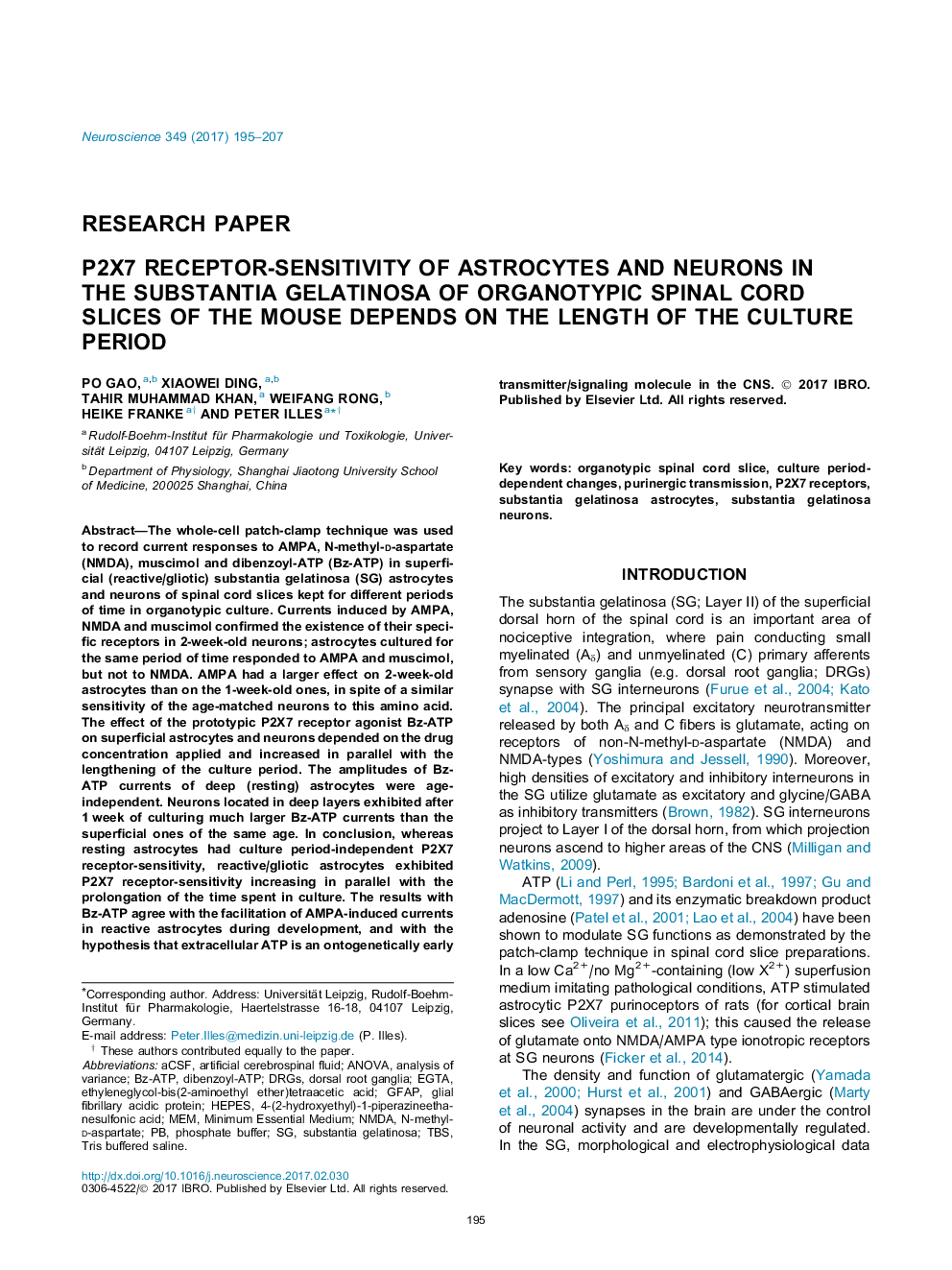| کد مقاله | کد نشریه | سال انتشار | مقاله انگلیسی | نسخه تمام متن |
|---|---|---|---|---|
| 5737714 | 1614727 | 2017 | 13 صفحه PDF | دانلود رایگان |

- All astrocytes and neurons of the mouse substantia gelatinosa (SG) possess purinergic P2X7 receptors.
- The sensitivity of neuronal P2X7 receptors in mouse SG slice cultures increases with the duration of the culture period.
- The sensitivity of astrocytic P2X7 receptors in mouse SG slice cultures increases with the duration of the culture period.
- Only some of the SG neurons in mouse acute SG slices possess P2X7 receptors.
- All SG astrocytes in mouse acute SG slices possess P2X7 receptors.
The whole-cell patch-clamp technique was used to record current responses to AMPA, N-methyl-d-aspartate (NMDA), muscimol and dibenzoyl-ATP (Bz-ATP) in superficial (reactive/gliotic) substantia gelatinosa (SG) astrocytes and neurons of spinal cord slices kept for different periods of time in organotypic culture. Currents induced by AMPA, NMDA and muscimol confirmed the existence of their specific receptors in 2-week-old neurons; astrocytes cultured for the same period of time responded to AMPA and muscimol, but not to NMDA. AMPA had a larger effect on 2-week-old astrocytes than on the 1-week-old ones, in spite of a similar sensitivity of the age-matched neurons to this amino acid. The effect of the prototypic P2X7 receptor agonist Bz-ATP on superficial astrocytes and neurons depended on the drug concentration applied and increased in parallel with the lengthening of the culture period. The amplitudes of Bz-ATP currents of deep (resting) astrocytes were age-independent. Neurons located in deep layers exhibited after 1Â week of culturing much larger Bz-ATP currents than the superficial ones of the same age. In conclusion, whereas resting astrocytes had culture period-independent P2X7 receptor-sensitivity, reactive/gliotic astrocytes exhibited P2X7 receptor-sensitivity increasing in parallel with the prolongation of the time spent in culture. The results with Bz-ATP agree with the facilitation of AMPA-induced currents in reactive astrocytes during development, and with the hypothesis that extracellular ATP is an ontogenetically early transmitter/signaling molecule in the CNS.
Journal: Neuroscience - Volume 349, 4 May 2017, Pages 195-207